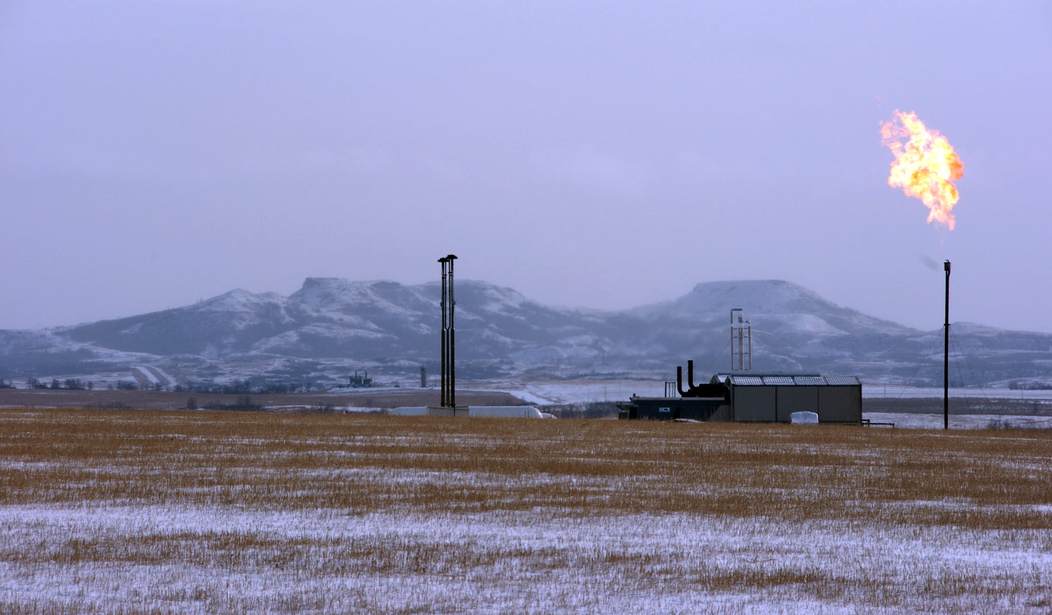The demonisation of carbon, the very basis of all life on earth,
can only be explained as a sacrilege and a perversity.
–John Brignell
In a recent article at PJ Media, Rick Moran discusses an op-ed in The New York Post by “climate skeptic” Bjorn Lomborg—perhaps we should say “temperate climate skeptic,” for Lomborg believes the earth is indeed gradually warming. This does not prevent him from arguing that the frenzy regarding the immediate or long-term heating of the atmosphere, owing to what we might call “carbon load,” and the specter of terrestrial catastrophe accompanying it are utterly misplaced. We are emphatically not in the midst of the climate cataclysm that Global Warmists insist is impending.
Lomborg’s The Skeptical Environmentalist (2001) and Cool It (2010) advance to a considerable extent an economic rather than a purely scientific argument. His most recent book False Alarm (2020) by no means eschews the economic factor but focuses on the dodgy science and apocalyptic fever that are currently agitating a portion of the scientific community and roiling public consciousness.
As Moran writes, “What makes Lomborg’s skepticism so unsettling for hysterics is that he cuts through the alarmism and BS to get at the truth of what the global warming mitigation strategies are all about.” They are chiefly about power, wealth, reputation, research grants, and professional sinecures. They are about the Leftist agenda to replace a free-market economy with a command economy. Those who endorse the hurricane of doomsday warnings, repeated every few years despite the evident lack of ecological compliance, do not have the time of day for Lomborg except to excoriate him.
In the Post op-ed, “Don’t buy the latest climate-change alarmism,” Lomborg agrees with the UN’s just released IPCC report that global warming is a serious problem, but deplores “how much one-sided thinking takes place in the climate conversation.” The report “confirms that climate change indeed has increased heatwaves.” However, without dwelling on the subject, “the report tells us that global warming means the frequency and intensity of cold extremes have decreased.”
Lomborg continues: “This matters because globally, many more people die from cold than from heat. A new study in the highly respected journal Lancet shows that about half a million people die from heat per year, but 4.5 million people die from cold.” To its credit, the IPCC report also mentions in passing “that more CO₂ in the atmosphere has acted as a fertilizer and created a profound global greening of the planet. One NASA study found that over a period of 35 years, climate change has added an area of green equivalent to twice the size of the continental United States. But don’t expect to read about this in any of the breathless articles on climate impact.”
Lomborg’s brief is supported by Michael Shellenberger’s authoritative Apocalypse Never (2020) and was anticipated by Robert Zubrin, whose Merchants of Despair (2013) effectively laid out the case for the miracle and necessity of a rich lading of environmental CO2—a counterintuitive fact not understood by the blinkered catastrophism of the global warming crowd. No carbon, no food. Less carbon, less food. The war against carbon boils down—no pun intended—to a war against human flourishing. As Zubrin puts it, the theory of harmful global warming “is the core idea of antihumanism,” of which the once noble idea of environmentalism has become a chief incubator.
Zubrin points out that there exists robust scientific proof derived from ice core data and isotopic ratios in marine organism remains that Earth’s climate is ultimately a stable system, that CO2 emissions create surplus plant growth that in turn absorbs any untoward excess of atmospheric carbon dioxide, thus restoring climate equilibrium over the long term, and that under conditions of cyclical global warming agricultural productivity naturally increases for the benefit of humanity. Warmth and nourishment are certainly to be preferred to cold and scarcity.
Extensive scientific research conducted by the Fraser Institute and reported in its 1997 publication Global Warming: The Science and the Politics reminds us that CO2 levels during the Ordovician Age 440 million years ago were ten times higher than they are at present. Writing in the Wall Street Journal (March 27, 2012), acclaimed Princeton physicist William Happer also highlights the fact that “Life on earth flourished for hundreds of million years at much higher CO2 levels than we see today.”
Happer’s “The Truth About Greenhouse Gasses” in First Things (July/August 2011) presents the facts. “As far as green plants are concerned,” he writes, “CO2 is not a pollutant, but part of their daily bread.…Most green plants evolved at CO2 levels of several thousand ppm [parts per million], many times higher than now. Plants grow better and have better flowers and fruit at higher levels. Commercial greenhouse operators recognize this when they artificially increase the concentrations inside their greenhouses to over 1000 ppm.” He points out that “the Navy recommends an upper limit of about 8000 ppm for [submarine] cruises of ninety days, and NASA recommends an upper limit of 5000 ppm for missions of one thousand days. We conclude that atmospheric CO2 levels should be above 150 ppm to avoid harming green plants and below about 5000 ppm to avoid harming people.” The current level is approximately 400 ppm.
Lomborg’s circumspectly compatible handling of the IPCC’s 4000-page “code red for humanity” assessment was not entirely unexpected. He is critical of some aspects of it, less so of others. But the unvarnished truth of the matter is that the various techniques and interventions employed by the Green industry to reduce our so-called “carbon footprint”—carbon capture, carbon offsets (a complete canard), electric vehicles (so to speak, a non-starter), a landscape-despoiling architecture of wind turbines and solar panels—are not only largely unworkable and punitively costly but are actually counter-productive. Neither the economy nor the electrical grid can sustain them, and neither can our supermarket shelves. The planet is not only not going to burn up and sink beneath the seas; rather, if climate projections from the best authorities are disregarded, it may freeze before its time.
For it appears that we are entering a Solar Minimum when the solar magnetic field diminishes and cosmic radiation increases, producing greater cloud cover and eventually cooler temperatures. Agricultural and environmental economist Donald Avery furnishes the latest data from the CERN particle physics lab, which “foresees no runaway warming. Instead, it sees an impending cold solar minimum.” Further corroboration comes from many reputable sources (which I have listed, albeit in abbreviated form, in an earlier essay), including Arnab Rai Choudhuri’s closely reasoned Nature’s Third Cycle (2015). Choudhuri yields supporting evidence for drastically reduced sunspot activity and the prospect of cooling summers and harsh winters to come. We are in the initial stages of this development now.
Of course, there will be heatwaves, which Warmists will seize upon to justify their prepossession; the inevitable cold spells will be dismissed and forgotten since these are unwelcome intervals of climatological refutation, or treated as events to be analytically manipulated to suggest the opposite. The New York Times (2008), for example, quoted an array of scientists who regard cooling events as merely “a cold kick from the tropical Pacific Ocean.” Nothing much to see here. After all, “Many scientists also say that the cool spell in no way undermines the enormous body of evidence pointing to a warming world.” Cold periods, then, are temporary fluctuations in weather patterns, nothing more.
A NASA bulletin (2010) added its weight to the hypothesis. A pressure pattern called the Arctic Oscillation can cause “unseasonably cold air masses to sweep over what are normally temperate latitudes,” a local or interim phenomenon. Cold spells then become indisputable signs of a planet heating up. The effect is abetted by a mechanism called “radiative forcing,” a chemical chain reaction producing a multiplier heat result affecting the earth’s energy budget. You can’t win. Present cold equals future hot. Even if humans may one day find themselves beginning to live in the cryosphere, climate apocalyptists will undoubtedly dismiss it as a passing aberration.
As for Michael Mann’s famous hockey stick graph indicating a spike in recent temperatures, it is a flawed statistical artifact and has been definitively disproved, as A.W. Montford has shown in The Hockey Stick Illusion: Climategate and the Corruption of Science (2010). The wrong time scale was used to establish the mean temperature to compare with recorded temperatures of the last century, which accounted for the sudden vertical blade rising from the shaft of the hockey stick. Professor Mann, it seems, did not account for the Medieval Warming Period between approximately 800 and 1300 C.E. when temperatures were higher than they are today. A hockey stick remains something to play hockey with, not something you fudge a statistical lattice with.
The one thing that is truly warming is the emotional temperature, as well as the rhetoric of the interested parties. If against the evidence we continue to believe that carbon is an evil agent, and if the current anti-carbon delirium should prevail, we are in for a chilling surprise, regardless of our righteous convictions. This is a time for soberly planning how to manage such dismaying contingencies of temperature reduction rather than for accelerating them by helping to cool the planet.
Ignorance may be bliss, but only for a very short while.










Join the conversation as a VIP Member